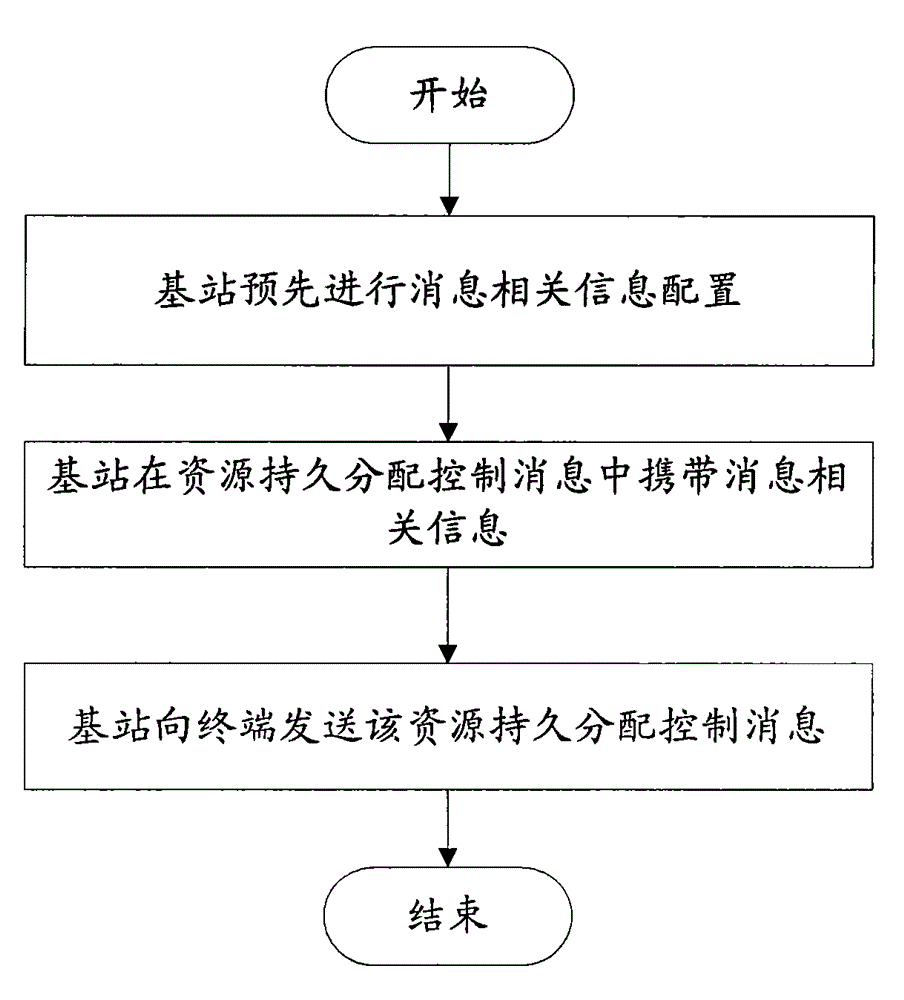Message sending and message feedback preprocessing method
A message and control message technology, applied in the field of communication, can solve the problems that the terminal cannot know, whether the base station sends a control message, message design redundancy, etc., so as to improve the utilization rate of communication resources, overcome the existence of redundancy, and reduce the effect of message overhead
- Summary
- Abstract
- Description
- Claims
- Application Information
AI Technical Summary
Problems solved by technology
Method used
Image
Examples
Embodiment 1
[0016] As mentioned above, at present, when the terminal cannot receive the message on the subframe where the base station may send a control message containing persistent allocation content (for example, the persistent allocation control message, Persistent Allocation A-MAP Information Element), it cannot determine that it is the base station. The message is not sent, or the terminal itself cannot successfully decode the message. For this reason, the embodiment of the present invention first provides a message sending method, which informs the terminal whether the base station sends the resource persistently by adding an indicator or indication information to the message. Assign control messages.
[0017] In the message sending method according to the embodiment of the present invention, the base station sends a first message to the terminal through a downlink channel in a time region (for example, one or more subframes), and carries a second message indication identifier in the ...
Embodiment 2
[0021] In this embodiment, a terminal-side processing procedure based on the first embodiment is provided. On the terminal side, the terminal that has obtained the persistent resource tries to receive non-user-specific control information on the subframe or frame corresponding to its persistent allocation period to determine whether the persistent resource allocation related to the terminal has changed.
[0022] Specifically, in this embodiment, after receiving the first message, the terminal will obtain the indication flag (Persistent A-MAP IE Existence Flag) carried in the first message, and perform subsequent operations according to the indication flag. Specifically, if the second message indication identifier indicates that the base station sends the second message within the time zone, but the terminal does not receive the second message within the time zone, the terminal feeds back error reception information to the base station; if the second message indicates the identifie...
example 1
[0025] Table 1 shows part of the content of non-user-specific control messages. Assuming that the terminal MS-A has obtained the persistent resource allocation and the persistent resource allocation control message receiving error feedback channel (MAP NACK Channel), after the terminal MS-A receives the non-user-specific control message sent by the base station, if the message The persistent resource allocation control message contained in the indicator indicates that the identifier is valid, that is, Persistent A-MAP IE Existence Flag=1, but the terminal MS-A does not successfully receive the resource persistent allocation control message in this subframe, the terminal MS-A passes The MAP NACK Channel feeds back information to the base station that it has not successfully received the persistent resource allocation control message. It should be noted that the indicator of the persistent resource allocation control message can also be implicitly included in the cyclic redundanc...
PUM
 Login to View More
Login to View More Abstract
Description
Claims
Application Information
 Login to View More
Login to View More - R&D
- Intellectual Property
- Life Sciences
- Materials
- Tech Scout
- Unparalleled Data Quality
- Higher Quality Content
- 60% Fewer Hallucinations
Browse by: Latest US Patents, China's latest patents, Technical Efficacy Thesaurus, Application Domain, Technology Topic, Popular Technical Reports.
© 2025 PatSnap. All rights reserved.Legal|Privacy policy|Modern Slavery Act Transparency Statement|Sitemap|About US| Contact US: help@patsnap.com


